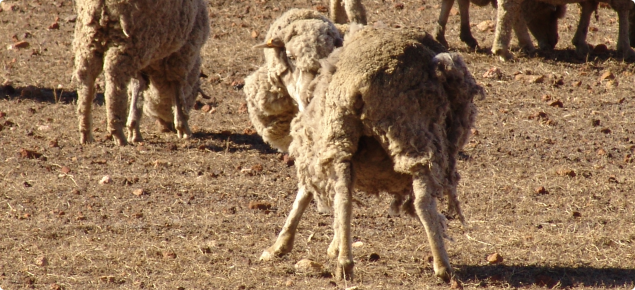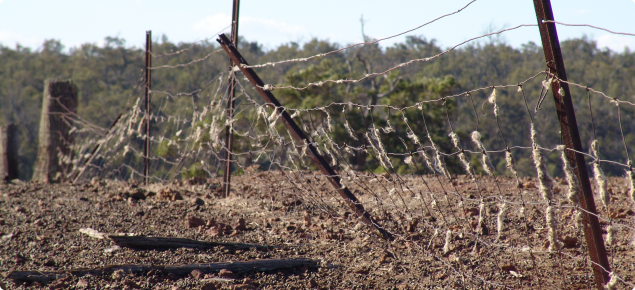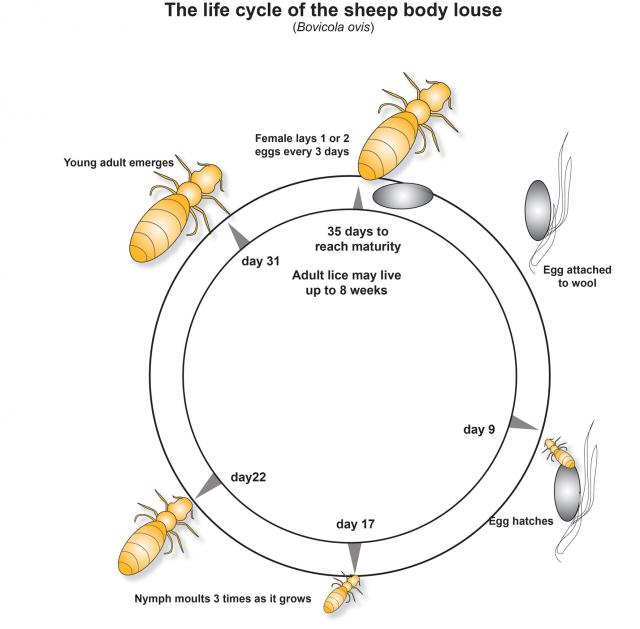Lice biology
Sheep lice adults are about 1.6 millimetres (mm) long and have a pale brown body with dark bands. The young lice (nymphs) are smaller with a cream coloured body and a brown head, but no bands on the body. Adult females usually live for one month and on average lay 1-2 eggs every three days, which hatch after about 10 days. The life cycle from egg to adult takes about 35 days.
Temperatures greater than 45˚C will rapidly kill eggs. Lice rely on the relatively constant environment in the sheep’s fleece as they are sensitive to extreme temperatures, light and water. The optimum temperature for survival is 36-37˚C, which is the approximate skin temperature of sheep under most conditions. In spring shorn sheep, lice population build-up generally occurs more slowly during the hotter, drier times of the year with lice numbers building more rapidly during the cooler months.
Survival and spread
Most transmission occurs when sheep make direct contact with each other, such as between ewes and lambs and when sheep are yarded, shedded or in sheep camps. The risk of spread will be increased if sheep have:
- short wool (high risk of transfer while sheep are in counting pens after shearing)
- opportunity for close contact, including yarding, handfeeding, and ewes with lambs
- been exposed to conditions such as warmth and shade which encourage lice to move to the wool tip.
Conversely, there is a decreased risk in extreme hot or cold temperatures and/or wet fleeces.
Lice spend most of their time at the base of the wool fibres on the skin, where they consume surface debris, causing intense irritation in some animals. Although there have been rare instances where sheep lice have been found to reproduce on goats, they generally do not establish on other species of animals.
Wool on fence lines poses little risk of spread, as the lice fall to the ground and die in a relatively short period of time. One investigation found that they could survive for up to 10 days on shearers’ moccasins. Thus, it is recommended to change clothes and footwear if recent contact has been made with lousy sheep prior to handling uninfested sheep.
Lice can survive 2-3 weeks in a warm, dark environment if they have a feed source, such as wool. Therefore it is worthwhile cleaning the shed of wool pieces and consider allowing at least three weeks before penning clean sheep in a shed where lousy sheep have been held.



